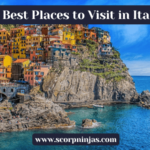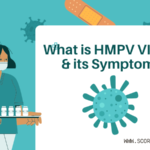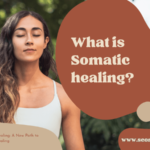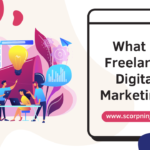Taking an ice bath has become an increasingly popular way to support health and wellness. Plunging into icy cold water or a cold plunge tub may seem daunting, but it offers some promising health benefits of an ice bath.
From professional athletes to biohackers, people across the spectrum use cold water immersion to aid workout recovery, stimulate weight loss, and elevate mood. And the research on ice baths for inflammation, circulation, immunity, and mental toughness continues growing. It turns out that a brief cold plunge into uncomfortably cold water triggers beneficial effects that compound over time.
This article will discuss some of the most amazing benefits of an ice bath that will make you take a cold plunge.
What is a Cold Plunge?
A cold plunge also known as an ice bath refers to the act of submerging your body into chilly or icy cold water for a brief period of time. To take a cold plunge, you can use a built-in or portable cold plunge tub. Many cold plunge enthusiasts opt to go the DIY cold plunge route and convert standard tubs into temporary or permanent cold therapy stations.
A DIY cold plunge requires no fancy equipment, just ample ice, and water that’s cold enough to shock your system and stimulate therapeutic benefits. Cold plunges can last for seconds, minutes, or up to a few hours for severely cold adaptation enthusiasts. Most newcomers start with shorter plunges and gradually work up as their body adjusts and get used to the cold stress.
7 Amazing Health Benefits of an Ice Bath
As per the study, there are a lot of health benefits of an ice bath. We have filtered some of the most amazing and effective ice bath benefits for you:-
1. Reducing Inflammation and Speeding Recovery
One of the most amazing health benefits of an ice bath is reducing inflammation, especially after strenuous exercise. The cold causes vasoconstriction, reducing blood flow to tissues. When you get out of the cold plunge tub or an ice bath, blood floods back, bringing fresh nutrients and oxygen. This flood also clears metabolic waste, leading to less inflammation and faster recovery times.
Many athletes now use ice baths to ease sore muscles after intense training sessions. Even a brief ice bath can limit muscle damage, swelling, and soreness, allowing you to get back in the game faster. Regular cold plunges may also help reduce chronic inflammation over time.
2. Boosting Immunity
Frequent cold exposure trains your body to better handle stress. As plunging into an ice bath triggers the mammalian diving reflex, it causes your heart rate and blood pressure to decrease. Your blood also thickens to keep your vital organs warm. Over time, taking regular ice baths seems to boost resilience against both hot and cold stresses. They may also improve your overall immune response.
Some research indicates that cold water immersion increases metabolic rate and white blood cell count. Your body ramps up heat generation by burning fat “brown adipose tissue.” This fat-burning quality helps generate body heat to compensate for the cold.
These beneficial adaptations in immunity and metabolism occur with routine cold exposure training. Over time, your threshold for heat and cold stresses improves dramatically. You can thrive through seasons of extreme temperatures that used to leave you feeling miserable. Making it one of the most amazing health benefits of an ice bath.
3. Elevating Mood and Relieving Depression
One of the most amazing health benefits of an ice bath is that it helps in elevating mood and relieving depression. The shock of an ice bath triggers your sympathetic nervous system, making you feel alert and energized. As you gradually adapt to handle cold stresses, your baseline resilience and vigor increase. This is why many cold therapy enthusiasts rave about increased energy, vitality, and zest for life.
Interestingly, frequent cold water immersion may also relieve symptoms of anxiety and depression. As with exercise, a cold plunge into ice water causes your brain to release feel-good chemicals like endorphins and dopamine. The psychological thrill can elevate your mood similar to high-intensity interval training.
Over time, adapting to handle the demands of an ice bath requires grit and mental focus. Pushing your comfort zone continually in this way builds confidence and self-efficacy. Having a regular practice that makes you feel vibrant and strong naturally enhances self-esteem.
4. Promoting Restful Sleep
While an ice bath initially causes alertness and catecholamine release, it changes signaling later on. After the cold plunge, your PNS activates to return your body temperature and physiological arousal back down. This parasympathetic backlash sets you up for rest and relaxation afterward.
Interestingly, the effect cold water immersion has on sleep often depends on when you do it. Taking an evening ice bath a few hours before bed may help cool down your core temp. This helps initiate your body’s natural sleep cycles and rhythm.
On the other hand, cold plunging first thing in the morning promotes energy and wakefulness when you need it most. So, timing seems to matter when leveraging ice bath benefits for either sleep or alertness support.
5. Weight Loss and Fat Burning
Weight loss and fat burning are some of the effective health benefits of an ice bath. Your metabolism ramps up in response to cold exposure as your body works hard to generate warmth. This extra calorie burn during and after an ice bath is part of what contributes to cold therapy aiding sustainable weight loss.
Brown adipose tissue (BAT) gets activated when your skin senses the frigid water temperatures. BAT helps transfer calories directly into heat without utilizing glucose or muscle breakdown.
Repeated cold exposure while in the fat-burning zone trains your BAT to become more efficient over time. This means greater passive calorie expenditure throughout the day, rather than just directly after each cold plunge. The consistent slight uptick in metabolic rate contributes to easier weight loss without aggressive dieting.
6. Slowing Aging and Cellular Damage
Research continues emerging on the anti-aging potential of routine cold water immersion. As your resilience to temperature extremes improves, so does your overall stress tolerance. This directly correlates with longevity from a biological standpoint.
Frequent exposure to manageable hormetic stress keeps cells hardy and less likely to accumulate damage. Cold conditioning may also support mitochondrial health. More efficient mitochondria mean better energy utilization within cells and less waste accumulation over time.
Preventing low-grade chronic inflammation is hugely impactful for longevity as well. The post-immersion anti-inflammatory response fights systemic inflammation. This effect compounds over time for adapters who stick with consistent cold plunges.
7. Building Mental Toughness
Perhaps the most impactful ice bath benefits have nothing to do directly with physiology. Instead, it is the extreme growth in the comfort zone, confidence, and mental resilience that comes from the practice. Cold water plunge requires grit, courage, and determination in the face of profound discomfort. Like any hormetic stress, there is a powerful adaptive effect that compounds mentally over time.
By learning to lean into the innate desire to escape the unpleasant ice water bath, you train your ability to endure difficulty. This starts as physical resilience to temperature extremes. But it quickly becomes a hardened mental attitude and stoic mindset.
The transformative power is learning you can choose to handle much more than you ever thought possible. This courage and confidence gained facing the cold ripples into all other areas of life.
Additional Health Benefits of Cold Plunge
Beyond the main perks described so far there are additional health benefits of cold plunge, research continues uncovering a range of health benefits of an ice bath correlated with routine cold exposure training:
Reduced All-Cause Mortality
Studies show people who swim regularly in cold water seem to live longer than matched controls. This may tie into improved immunity, hormones, circulatory function, etc.
Enhanced Lymphatic Drainage
The cold causes tissues to constrict and then dilate, which helps clear lymph fluid throughout the body. This aids detoxification and likely supports immune health. This is one of the impactful health benefits of cold plunge.
Increased fertilization rates
A few studies found frequent winter swimming increased sperm quality and fertility rates for men seeking conception assistance. So next time before stressing out about fertilization rates consider taking an ice bath in a cold plunge tub.
Improved cardiovascular function
Repeated cold exposure enhances the vagal tone and vascular reactivity over time. This protects against hypertension and heart issues. Making it one of the most effective health benefits of cold plunge.
Healthier skin, hair, and nails
Apart from the above-mentioned health benefits of cold plunge, taking an ice bath in a cold plunge tub can promote healthier skin, hair, and nails. Many cold therapy enthusiasts also notice aesthetic improvements like glowing skin, fast-growing hair, and hardier nails during regular ice baths or cold plunges.
The list of health benefits of cold plunge continues growing as researchers unearth more metabolic, hormonal, circulatory, and regenerative benefits of consistently cold water immersion training. Clearly, the practice offers far more whole-body benefits of an ice bath than simply distracting oneself from pain or discomfort.
Also Read: 10 Surprising Benefits of Jaggery for Skin and Health
Essential Tips for Getting Started with Ice Baths
Once you understand all the ways plunging into an ice bath can transform your health, performance, and quality of life, you’ll probably want to get started! Although you now know the amazing health benefits of an ice bath. Here is some key advice for those new to ice bathing:
1. Gradually Acclimate to the Cold
Do not try to tough out a long ice bath on your first attempt. Especially in winter or with ice added, the water can be dangerously cold even for veterans. Introduce cold plunging gradually.
Start by getting your feet and hands wet just up to the wrists and ankles for 30-60 seconds. As this gets easier add a little more depth while still getting out before you feel desperate to escape. Work your way down to soak your hips, then progress to full submersion up to your neck. For practising you can create a DIY cold plunge or a cold plunge tube at home by yourself.
By allowing your nerves, circulation, and metabolism to adapt slowly, ice bathing becomes invigorating rather than intolerable. Never force yourself to stay so cold you cannot function safely getting back out of the cold plunge tub.
2. Time Your Breathing
earning proper breathing techniques helps ease discomfort during cold plunges. As you submerge, deliberately exhale continuously rather than holding your breath. Extend your exhalations and control breathing instead of gasping.
Smooth nasal breathing taps your parasympathetic nervous system to limit shock reaction. Exhaling also prevents hyperventilation from discomfort. Stay calm and focused on your respiration.
3. Start Short
When beginning ice baths, limit your immersion to 30-90 seconds. Measure with a stopwatch rather than trying to tough it out. Always get out before you feel desperate, shivering uncontrollably, or losing coordination.
As your cold adaptation improves over weeks, gradually increase the plunge length week-to-week. But there is no need to endure more than 3-5 minutes maximum once adapted. By then the benefits of cold plunge plateau, but the willpower demand keeps rising.
4. Warm Up Afterward
Getting out of the cold plunge tub is only half the process. Be sure to gently warm back up either with layers of dry clothes or a warm shower. Core body temperature drops rapidly in an ice bath, so it’s important to actively warm back up to avoid after-drop.
After-drop refers to continued core cooling that can happen even once you exit the frigid water. This happens as peripheral blood flow sends cooled blood back toward your organs. Prevent this by drying off right away and putting on warm layers head-to-toe.
Use thick dry towels or robes to allow passive warming, or take a hot shower. The goal is to raise your core temperature at a controlled pace while avoiding shivering. Active movement can also help generate warmth through muscle contraction.
Once your skin color returns to normal and you stop shivering, you’ve likely rewarmed successfully. But continue wearing insulating dry layers for at least 20-30 minutes after getting out of the cold. Fueling up with something warm to drink also accelerates rewarming.
Pay attention the next few hours as well for signs of fatigue, headache, dizziness, or reduced coordination. These can indicate your warmup was insufficient. Take it easy the rest of the day and consider shortening your next cold plunge session.
Conclusion on Ice Bath Benefits
There is a wide range of health benefits of an ice bath. The combination of boosted circulation, reduced inflammation, enhanced immunity, and increased calorie burn add up to better overall wellness. Beyond the physiological perks, the mental resilience and confidence gained from facing the cold regularly lead to personal growth.
Consistently taking the benefits of cold plunge trains both body and mind to thrive in adversity. Just be strategic about easing into your practice to allow your nerves, hormones, and metabolism to properly adapt. Before long, you’ll look forward to and be amazed by how a simple frigid soak makes you feel so alive.
I hope you enjoyed reading about the health benefits of an ice bath. Don’t forget to express your views about this article in comments.
FAQs on Health Benefits of an Ice Bath
Q. How cold should a cold plunge be to get the benefits of an ice bath?
There is no single ideal temperature for cold water immersion. However, most experts recommend water between 50-59°F (10-15°C) to stimulate the benefits of cold plunge. This ensures cold enough water to trigger a shock response and therapeutic effects without being dangerously frigid.
For beginners, starting with water around 55°F allows you to gradually acclimate and work toward colder temperatures. Advanced cold therapy enthusiasts often use water as cold as 35-45°F by adding ice to maximize the benefits of an ice bath. But it takes months to work up to handling water this brutally cold.
Q. How long should I stay in a cold plunge to get the benefits of an ice bath?
When starting, limit your cold water immersion to 30-90 seconds. Time your first few cold plunges precisely with a stopwatch. It’s better to get out too soon than become incapacitated by the extreme cold.
As your cold adaptation improves, slowly increase the cold plunge duration week-by-week up to 3-4 minutes max. There is a threshold of diminishing returns around this timeframe for most people in terms of the benefits of cold plunge. Beyond this point, you continue expending mental willpower and putting physical strain on your system without accruing further benefits of an ice bath.
Ensure you are fully warming up between sessions as well before extending your time in the cold. Lingering fatigue, sluggishness, or reduced coordination means you need more recovery time between immersions. Listen closely to your mind and body for personalized feedback on the ideal cold plunge duration based on water temperature to take the full benefits of an ice bath.
Also Read: Making it Easy on How to Manage PCOS with Diet and Exercise 2.0














Every weekend i used to viit this web page, for the reason that i wish for enjoyment,
for the reason that this this web site conations in fact pleasant funny stuff
too. https://tri1ls.webflow.io/
I truly appreciate your technique of writing a blog. I added it to my bookmark site list and will
Hi there to all, for the reason that I am genuinely keen of reading this website’s post to be updated on a regular basis. It carries pleasant stuff.
Your article helped me a lot, is there any more related content? Thanks!
Your article helped me a lot, is there any more related content? Thanks!
Your article helped me a lot, is there any more related content? Thanks!